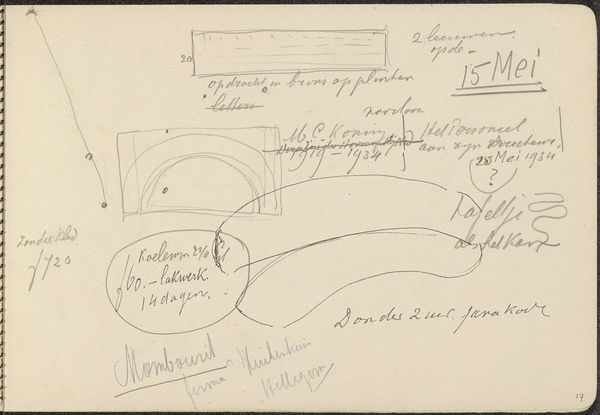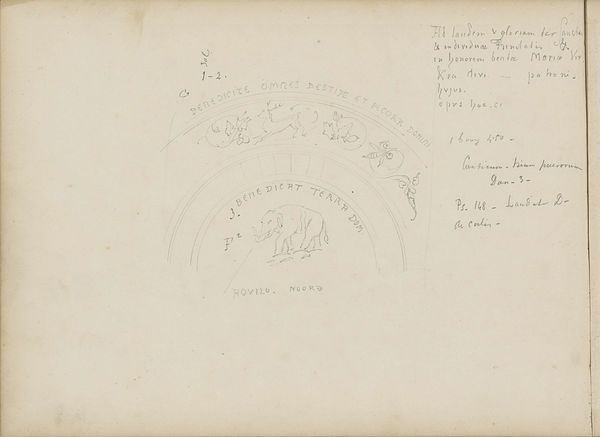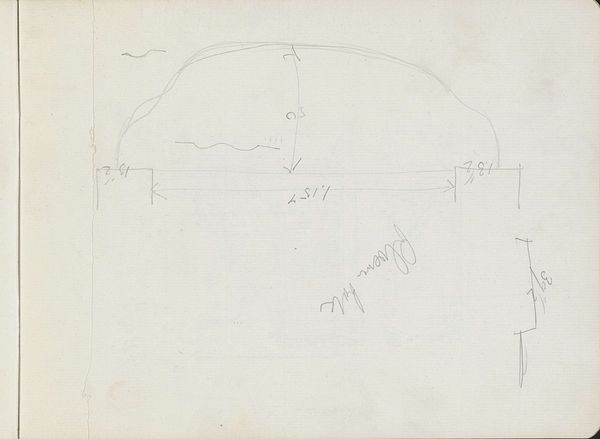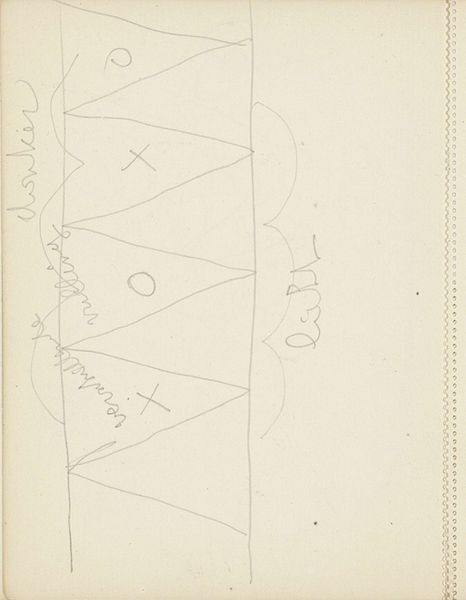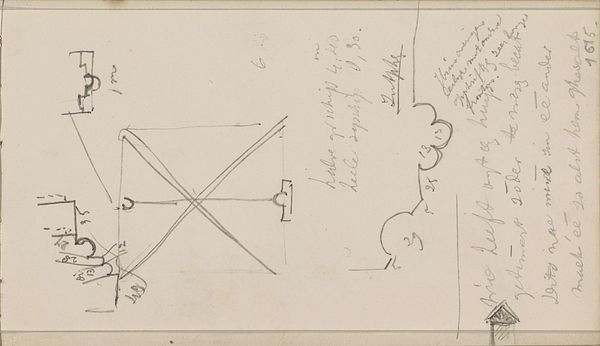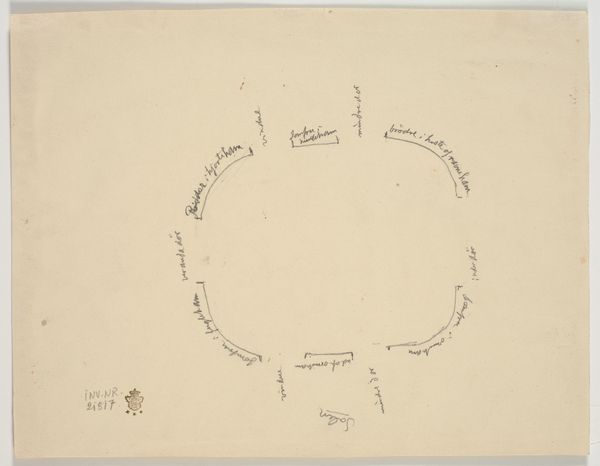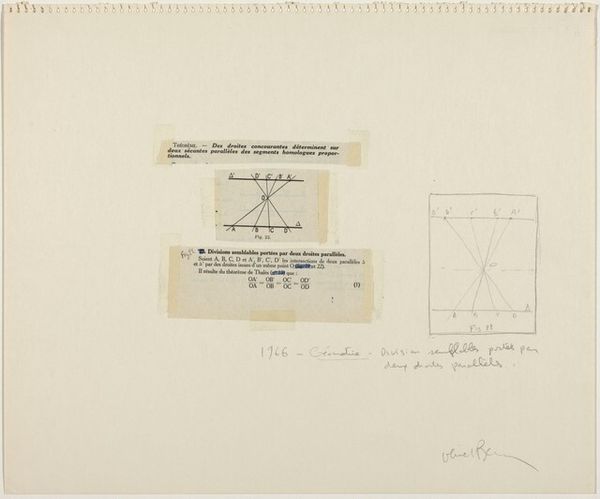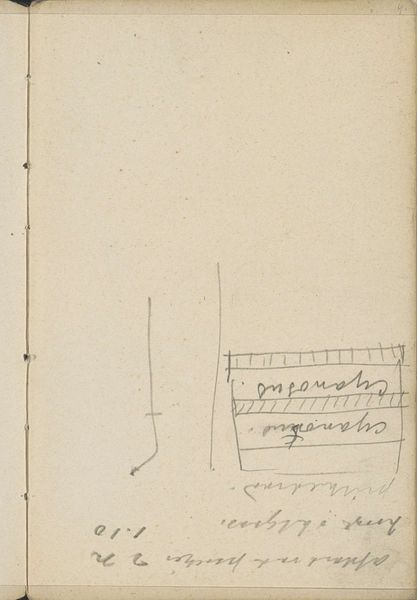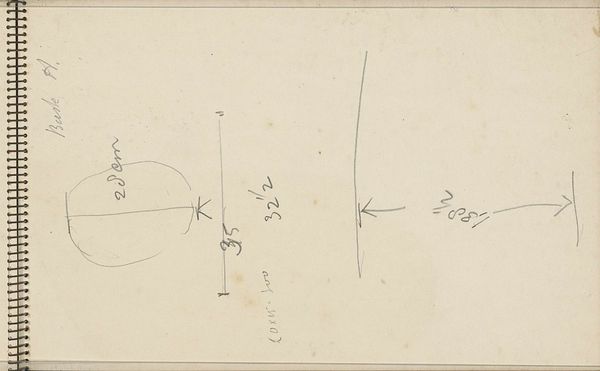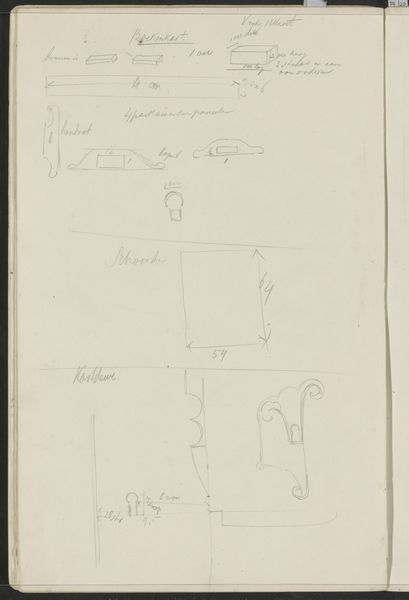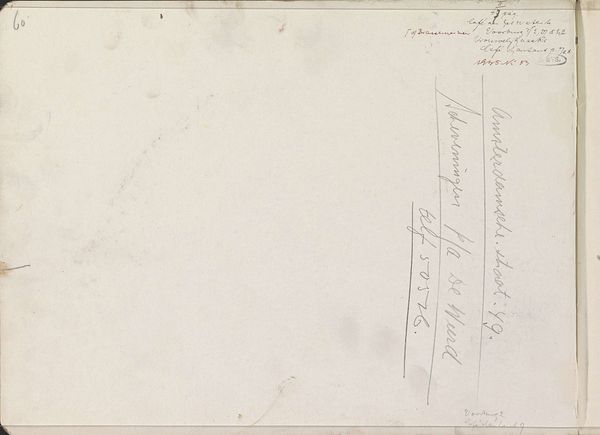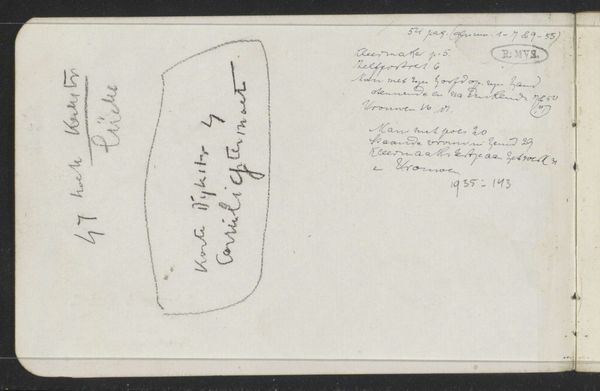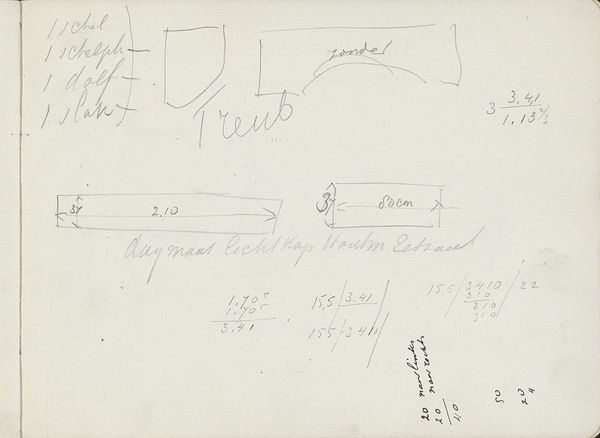
drawing, paper, pencil
#
drawing
#
paper
#
geometric
#
pen-ink sketch
#
pencil
#
abstraction
#
modernism
Copyright: Rijks Museum: Open Domain
Curator: This piece, titled "Haag," comes to us from Carel Adolph Lion Cachet. Dating to around the 1930s, it's a drawing executed with pencil and pen on paper and it now resides here at the Rijksmuseum. Editor: My immediate feeling is that it’s unfinished. A sketch of some sort. A pale, ethereal geometry looms out of the off-white paper. Almost hesitant in its line work. What am I looking at? Curator: It appears to be an abstraction—possibly architectural, perhaps an initial concept drawing. Cachet employed geometric shapes. Modernist ideals were popular during the time it was created, so a more stylized interpretation is highly probable. Consider also how class and industrial progress would inform artistic representation during this period. Editor: It’s sparse, yet those looping curves feel loaded with symbolism. Circles often signify wholeness, unity. This semi-circle suggests perhaps something is not yet complete, still in the works. The calculations scribbled around the curve—numbers I cannot decipher, yet still imbue the form with weight of some encoded system. Do you think there’s a visual vocabulary or some kind of mathematical allusion to sacred geometry embedded? Curator: Cachet was a man of his time, wrestling with both tradition and the march toward the future. Post-WWI society saw shifts in power, burgeoning political movements. Artists didn’t exist in a vacuum. Were his abstractions simply aesthetic, or do they comment on emerging ideologies and fractured world orders? This era witnessed a massive displacement, so there may also be a psychological element tied to shelter and security at play in those rudimentary lines. Editor: And it makes you consider what has survived from this time and what hasn't. What these simple shapes witnessed. The vulnerability of things sketched so hastily, so light, against the grand backdrop of history...it’s a poignant reminder of ephemeral intentions taking root in tangible art. Curator: A work like this demonstrates how socio-political shifts ripple through artistic practices, subtly or overtly informing visual language. The history behind modernist form-making reveals an intersection of anxieties, utopian desires, and societal commentary. Editor: For me, these ghostly arcs call out with stories both spoken and unspoken. It reminds us to look past the literal and discover meanings coded deep in time.
Comments
No comments
Be the first to comment and join the conversation on the ultimate creative platform.
